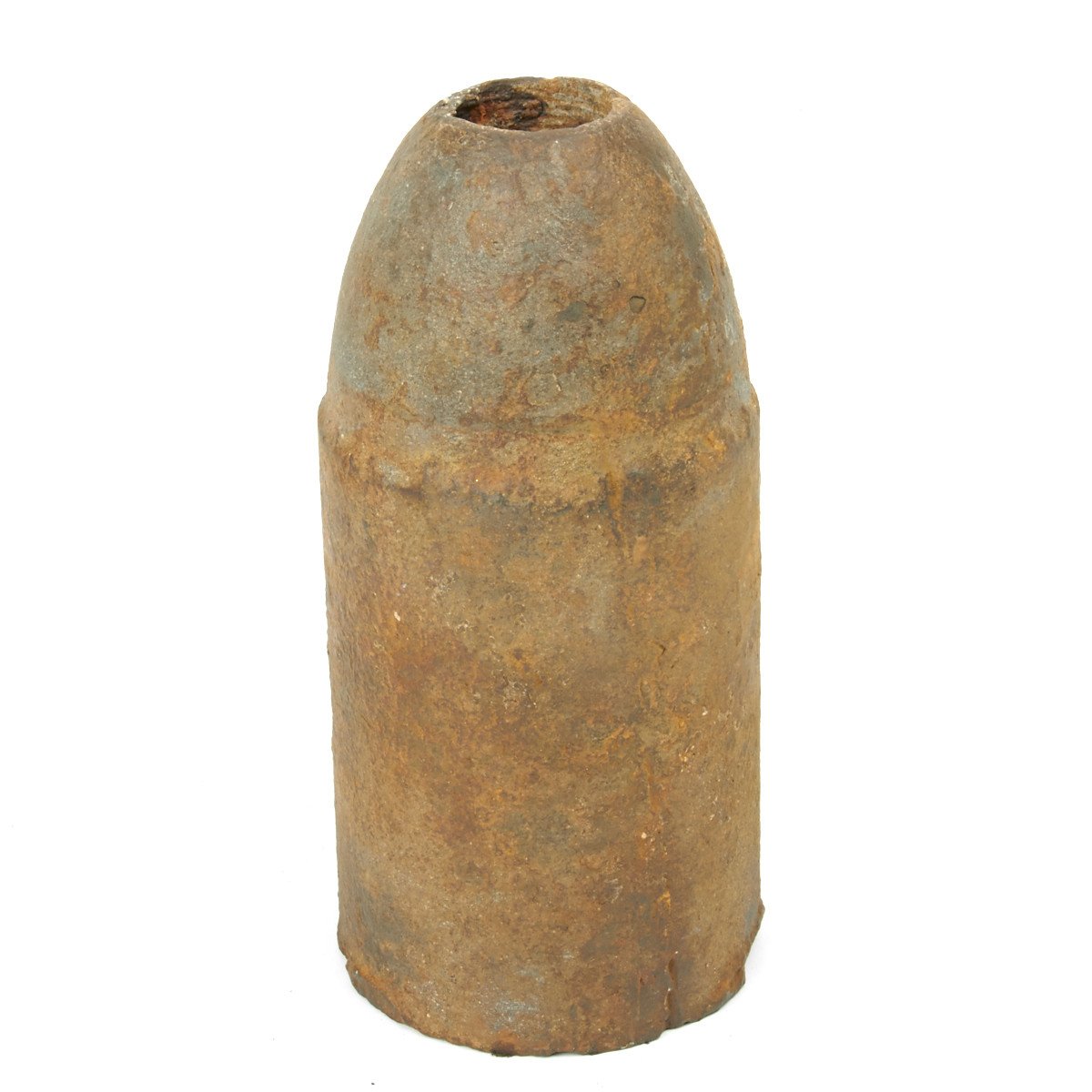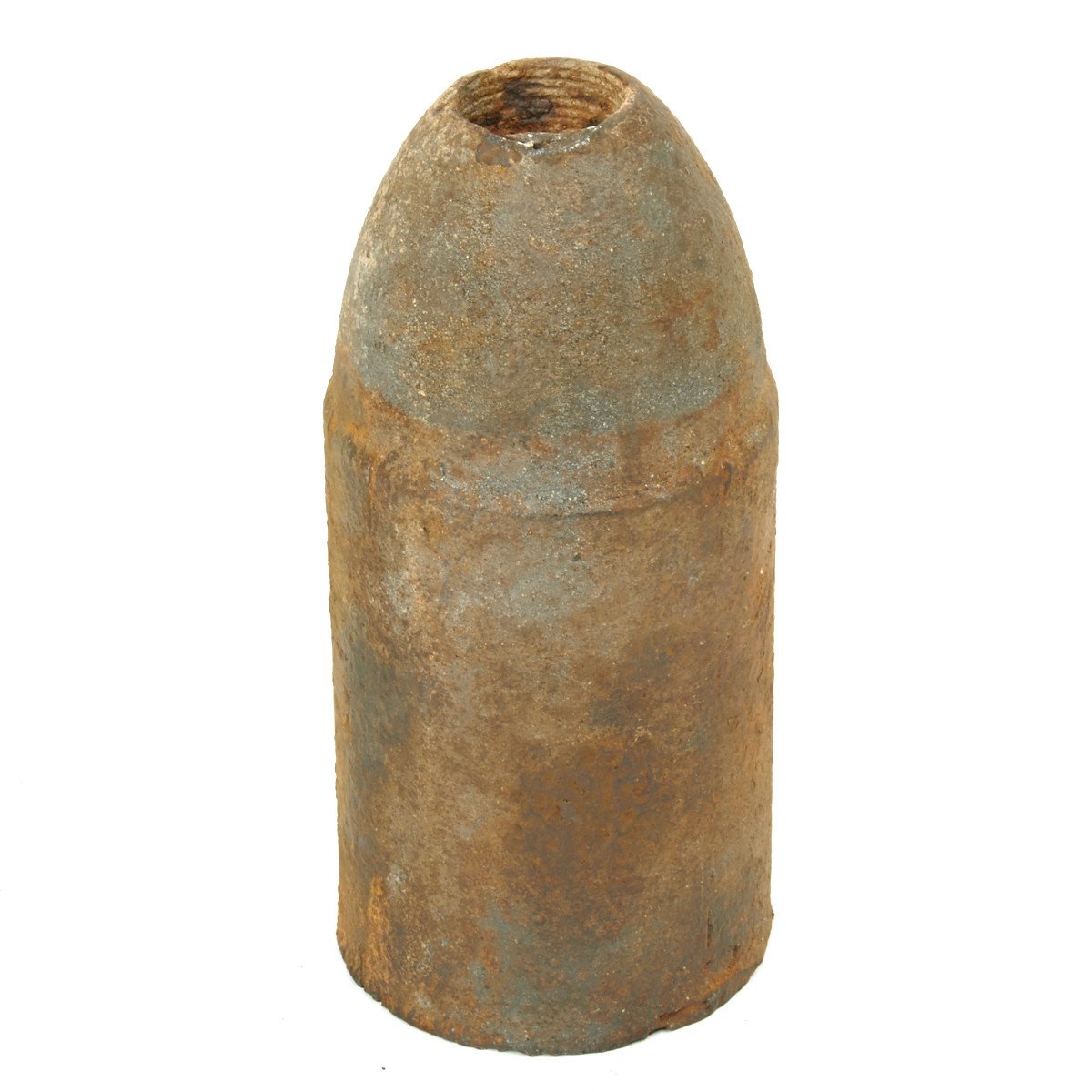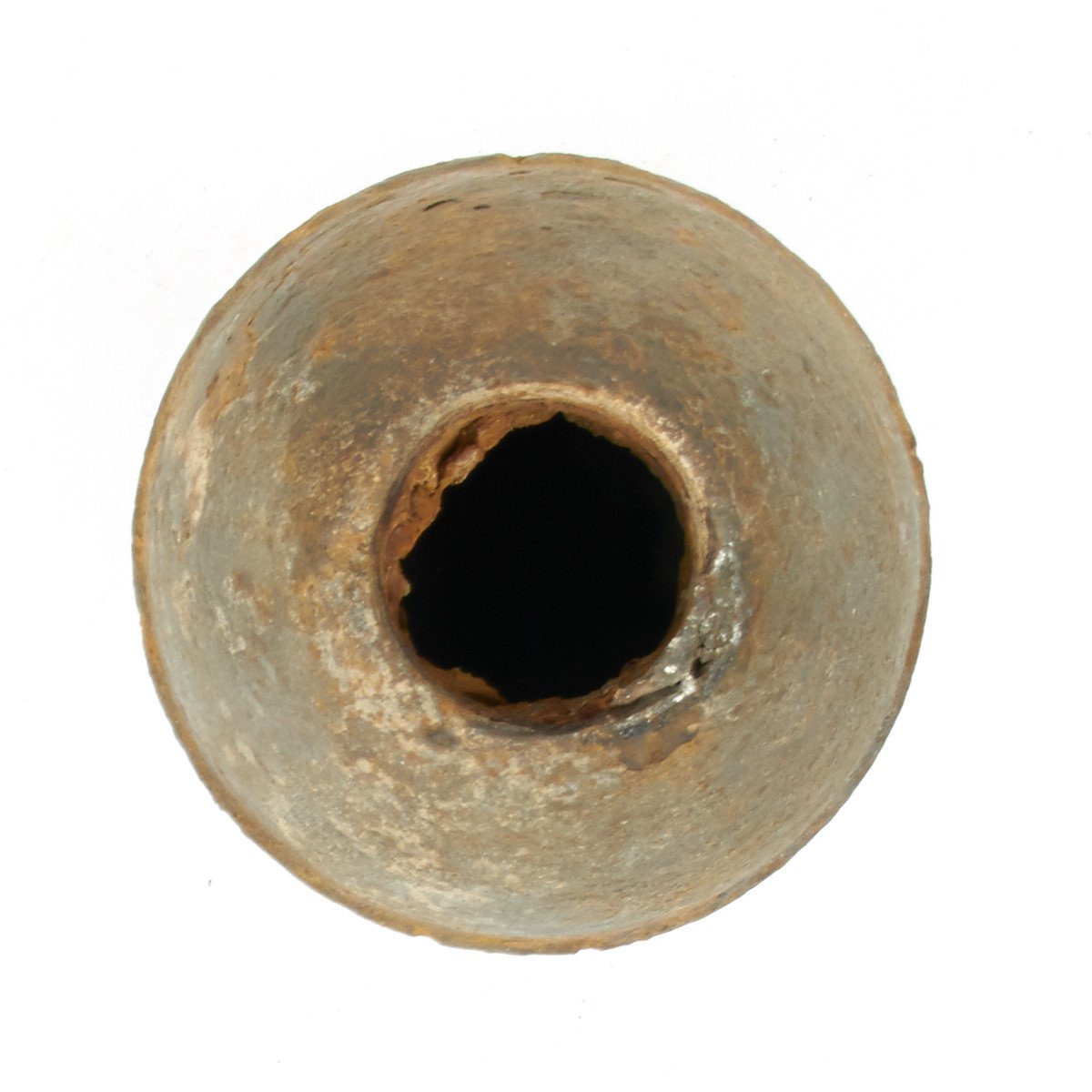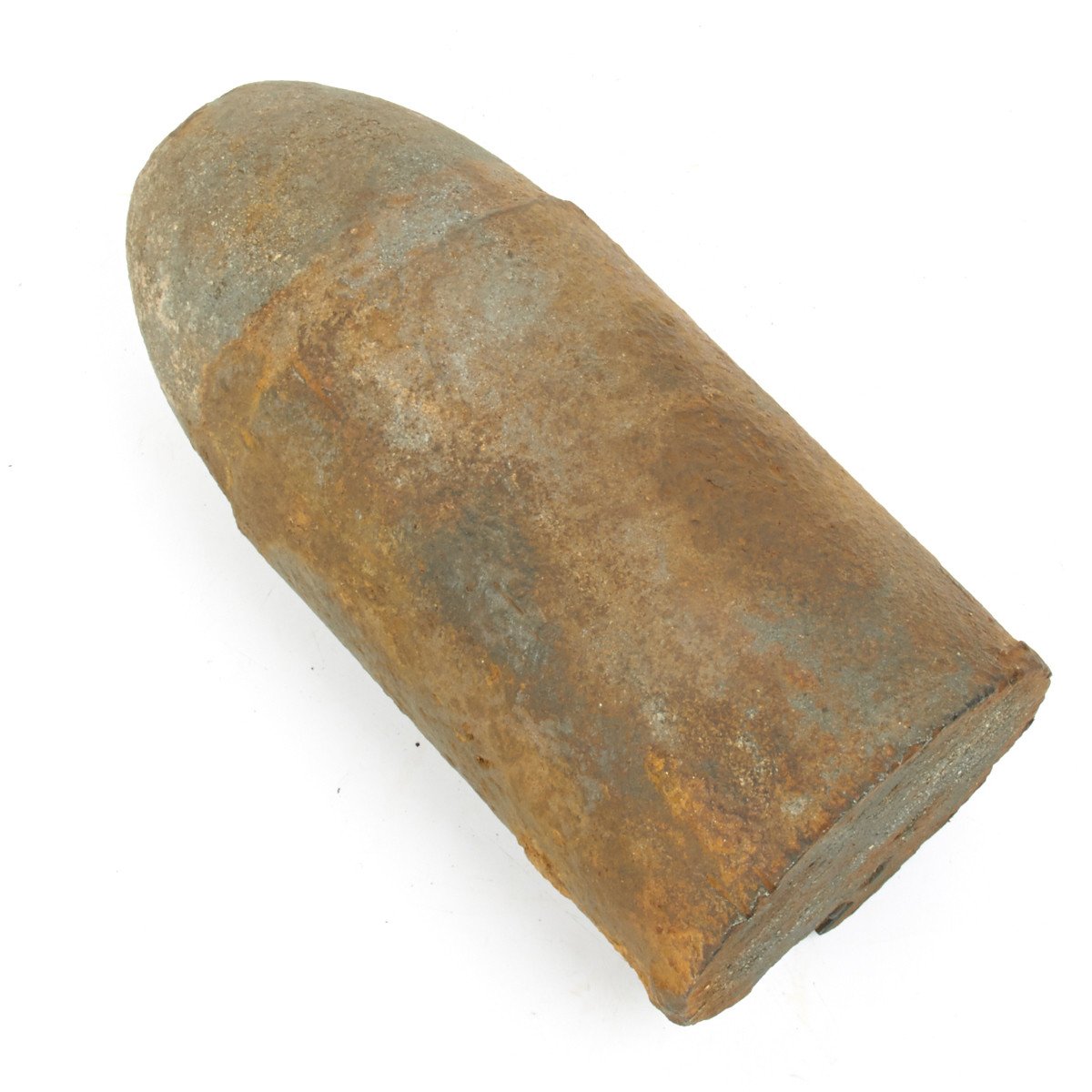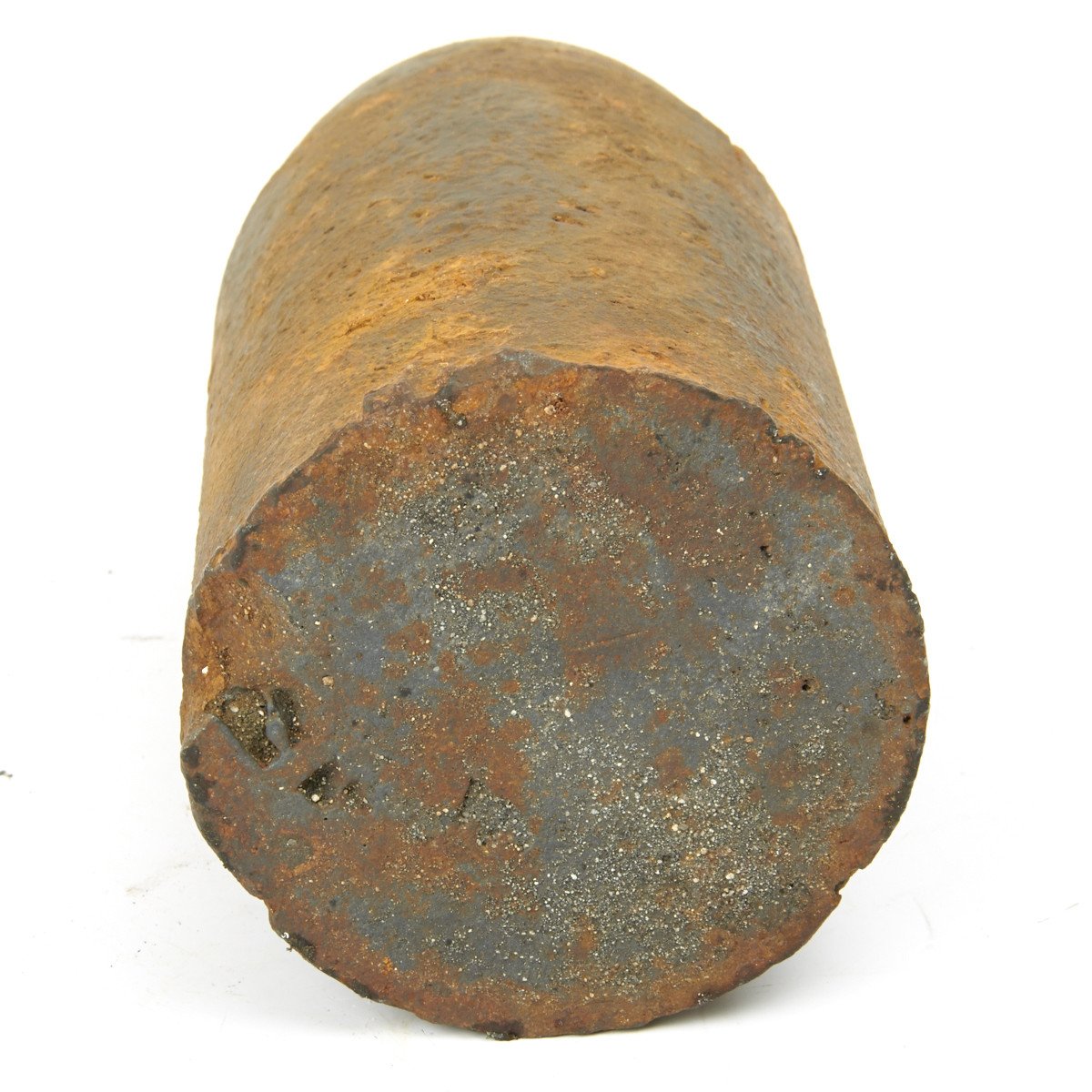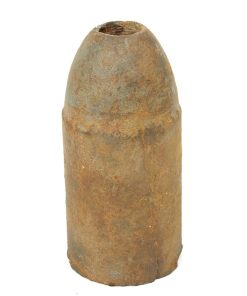Original British 1858 Armstrong Breech Loading Smooth Cannon Shell Original Items
$ 79,95 $ 39,98
Original Item: Nearly 150 years old these are Rare Projectiles for Armstrong Breech Loading Cannon. You probably know this already, but shell refers to a hollow iron or steel projectile, which could be filled with various materials. Common shells were filled with explosives and provided with a fuse to detonate them. Now, we call them explosive shell or, if the filling is a modern explosive instead of black powder, high explosive (HE) shell.
The 1800s saw numerous experiments in artillery to improve range and accuracy. Two factors were key: spinning the projectile and sealing the propelling gas behind it while it was in the gun tube. By the 1880s the problem had been pretty much solved with the use of driving bands, but before that various solutions were attempted. The famous Armstrong-Whitworth studded shell was a stopgap measure to allow muzzle loading cannon to fire rotating projectiles. The British called this system Rifle Muzzle Loaders, or RML.
The real key to solving the problems was loading the tube from the breech end. The Armstrong Company developed some advanced rifled breech loading guns in the 1850s, producing the most advanced artillery of the day. In 1858 Armstrong introduced a breech-loading gun with polygroove rifling, having 38 lands and grooves. Extant records indicate sales of this gun to American customers during our Civil War, along with various European customers. In fact, although polygroove sounds like a modern term, it was introduced in the 1850s with the new Armstrong system.
The projectiles of these guns used neither the driving stud system nor the driving band system, but rather encased the entire projectile in a thin layer of lead, which molded into the rifling when the propellant charge drove the projectile into the bore. This system was used in a variety of calibers, but one size, the 12-pounder, featured an extremely advanced concept, the tapered bore. The muzzle end of the barrel was narrowed to give an especially smooth finish to the lead sheath, which added to accuracy and reduced wind drag on the shell. Most artillery people think of the tapered bore as a German innovation during the Second World War. The Armstrong innovations sparked activity throughout Europe to modernize artillery establishments.
IMA has a few of these early Armstrong-type explosive shell projectiles. The lack of any driving band or studs identifies these shells as the very early Armstrong type, and they probably were for an 8 or 9 pounder. The original lead cladding was folded over the lip seen where the ogive (curved front end) begins. Unfortunately, soldiers apparently stripped off the lead sheathing once the type became obsolete, so ours are smooth steel. Lead is too useful to leave lying around. It is also worth noting that in the period when these were manufactured, the bursting charge was black powder, and explosive shell were generally not stored with the powder inside, because of the certainty that the powder would deteriorate. The photographs show how nicely they clean up: much of the stuff that looks like rust is actually clay-heavy dirt, and cleans off nicely. And then, what a bookend or paperweight youll have, even if you dont set it up with your other shot and shells! These are extremely rare and collectors hardly ever see them for sale.
We have photographed a cleaned version, for reference only, it looked just like the dirty one (well sell them dirty!) but we spent 45 minutes cleaning it with solvent, oil, and a wire brush.
| Hand Select | No, Yes |
|---|
Fast Shipping with Professional Packaging
Thanks to our longstanding association with UPS FedEx DHL, and other major international carriers, we are able to provide a range of shipping options. Our warehouse staff is expertly trained and will wrap your products according to our exact and precise specifications. Prior to shipping, your goods will be thoroughly examined and securely secured. We ship to thousands clients each day across multiple countries. This shows how we're dedicated to be the largest retailer on the internet. Warehouses and distribution centres can be located throughout Europe as well as the USA.
Note: Orders with more than one item will be assigned a processing date depending on the item.
Before shipping before shipping, we'll conduct a thorough inspection of the items you have ordered. Today, the majority of orders will be delivered within 48 hours. The delivery time will be between 3-7 days.
Returns
The stock is dynamic and we cannot completely manage it because multiple stakeholders are involved, including our factory and warehouse. So the actual stock may alter at any time. It's possible that you may not receive your order once the order has been made.
Our policy is valid for a period of 30 days. If you don't receive the product within 30 days, we are not able to issue a refund or an exchange.
You can only return an item if it is unused and in the same state as the day you received it. You must have the item in its original packaging.
Related products
Uncategorized
Uncategorized
Uncategorized
Uncategorized
Uncategorized
Uncategorized
Uncategorized
Uncategorized
Uncategorized
Uncategorized
Uncategorized
Uncategorized
Uncategorized
Uncategorized
Uncategorized
Uncategorized
Uncategorized
Armored Burgonet Helmet & Polearm from Scottish Castle Leith Hall Circa 1700 Original Items
Uncategorized
